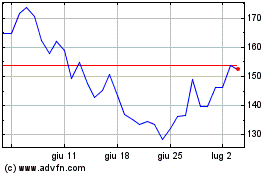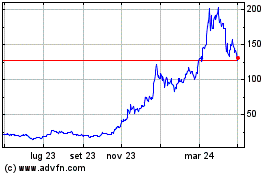

Key takeaways
-
Exit liquidity traps occur when new investors unknowingly
provide liquidity for insiders to cash out, leaving them with
devalued assets.
-
FOMO drives impulsive trades, often leading to costly mistakes
and becoming exit liquidity for early movers.
-
Beware of projects with exaggerated claims, low liquidity,
anonymous teams or sudden price surges.
-
Investing in high-market-cap coins, avoiding hype-driven
projects and using reputable exchanges reduce the risk.
Are you concerned about having bought a cryptocurrency only to
later realize that your investment facilitated someone else’s
profitable exit? This scenario is called an exit liquidity trap, a
deceptive market dynamic where unsuspecting traders provide
liquidity for insiders or seasoned investors to offload their
holdings at inflated prices.
By the time you recognize you have been trapped, the price
crashes, leaving you with devalued tokens. But how do you spot
these traps before it is too late?
This guide breaks down exit liquidity traps, their warning signs
and strategies to protect your crypto investments.
What is exit liquidity?
In traditional finance, the term refers to buyers who acquire
shares from early investors or founders during liquidity events
such as acquisitions, mergers or initial public
offerings (IPOs). However, in the cryptocurrency market, it has
taken on a more negative connotation.
In the cryptocurrency market, exit liquidity refers to
unsuspecting investors who purchase tokens
with little or no real value, thereby providing
liquidity to sellers aiming to offload their holdings.
This situation often arises when traders buy digital assets that
later become difficult to resell due to low demand or loss of
value. Understanding exit liquidity is crucial for crypto traders
to avoid being caught in schemes where their investments primarily
benefit those looking to exit the market.
The sheer number of tokens launched every month suggests the
scale of exit liquidity traps crypto traders face. In early 2024,
over 540,000 new crypto tokens were created, averaging
approximately 5,300 new tokens launched daily.

Did you know? In 2024, over 2
million tokens were launched. Of these, roughly 870,000 tokens,
representing 42.35%, were available for trading on
decentralized
exchanges (DEXs).
How can you end up becoming an exit liquidity for others’
profit?
Unforeseen circumstances can sometimes turn your investments
against you, making you an exit liquidity victim. Here are some
common scenarios where this might happen:
Pump-and-dump schemes
Pump-and-dump schemes
happen when a group of individuals artificially inflates the
price of a cryptocurrency by aggressively creating a buzz around
it. New investors are drawn in as the price surges, believing they
are riding a profitable opportunity. However, the manipulators dump
their holdings, causing a sharp crash in cryptocurrency, primarily
memecoins. Those who bought late end up with significant losses and
illiquid assets.
Project failures and scandals
A major security breach, financial mismanagement or
controversy
involving a crypto project can lead to a rapid decline in its
token value. When panic selling begins, investors who exit early
minimize their losses, while those who hold on too long become exit
liquidity victims as the price crashes.
Regulatory crackdowns
Government actions against specific cryptocurrencies can
suddenly shift market dynamics. If a cryptocurrency is declared
illegal or subjected to strict regulations, its trading volume and
liquidity can collapse, leaving investors struggling to sell.
Exchange delistings
When a cryptocurrency is removed from major
exchanges,
its liquidity can dry up quickly. Finding buyers for the token
becomes increasingly difficult without access to a large trading
platform. Novice investors may become an exit liquidity medium for
those offloading their holdings ahead of the delisting.
Market manipulation
Certain deceptive trading practices, such as
wash trading
or spoofing, can mislead investors into believing there is a strong
demand for cryptocurrency. Manipulators create an illusion of price
growth, encouraging new investors to buy in. Once the price reaches
their target, they sell their holdings, leaving others with
depreciating assets.

ICOs and token sale frauds
Some initial coin
offerings (ICOs) and token sales are designed to deceive
investors. Project founders may sell large amounts of tokens under
the promise of delivering a groundbreaking project but later
abandon it or fail to fulfill commitments, leading to a steep
decline in token value.
Did you know? As per Chainalysis,
the number of tokens launched in 2024 was 2,063,519. Among
these, the number of suspected pump-and-dump tokens was
74,037.
FOMO — The core reason for exit liquidity traps
FOMO, or fear of missing out, is a key factor behind crypto
traders becoming exit liquidity victims. It is an emotional
reaction where traders rush into perceived market opportunities,
fearing they will miss potential gains. This leads to trades
executed without thorough analysis, increasing the risk of
losses.
-
Trend-chasing: FOMO-driven traders
enter positions
based on hype rather than fundamentals, making them vulnerable
to market downturns.
-
Neglect of risk management: These traders
frequently neglect risk management strategies like diversification
or stop-loss
orders. This leaves them exposed to sudden price drops.
-
Focus on short-term gains: FOMO-driven traders
prioritize short-term gains over sustainable investment strategies,
leading to frequent, costly trades that erode overall
returns.
-
Impulsive decision-making: The traders’ heavy
reliance on social media, news and peer influence further drives
poor decision-making, as they react to market hype instead of
conducting independent research.
Factors behind FOMO
Several factors trigger FOMO in crypto trading:
-
Market rallies: Sharp price surges create a
sense of urgency. Traders rush to buy assets without analyzing
fundamentals, fearing they will miss out on quick
profits.
-
Social media hype: Social media influencers and
online communities often create hype, leading traders into making
risky, emotionally driven decisions.
-
Peer pressure: Peer pressure is another factor,
as seeing friends or colleagues profit from trades can push
individuals to follow suit.
-
Chasing trends: The tendency to chase trends
pushes traders to neglect personal financial strategies. The fear
of missed profits drives impulsive trades, which drives the
trend.
-
Regret: Watching asset prices rise creates
regret in traders if they don’t hold the cryptocurrency themselves,
prompting traders to act without proper analysis.
-
News-induced anxiety: Overexposure to market
news produces anxiety. Constant updates and financial reports
create a sense of urgency, prompting traders to react hastily
rather than sticking to a well-thought-out plan.
Did you know? According to Glosten
et al.’s (1993) GJR-GARCH model, neither Baur and Dimpfl (2018) nor
Cheikh et al. (2020) found the FOMO effect for Bitcoin or Ether
during 2013–2018. But Wang et al. (2021) discovered a FOMO effect
in the Bitcoin market between 2014 and 2019.
How to detect exit liquidity traps in crypto
Detecting exit liquidity traps requires diligent analysis on
your part. Consider the project’s development activity, the team
behind it and community engagement. Here are the red flags to spot
potential exit liquidity traps:
Coins without solid fundamentals and exaggerated claims
Steer clear of projects that artificially inflate the price of a
coin, luring in unsuspecting investors before insiders dump their
holdings for profit. Known as pump-and-dump scams, these often
involve exaggerated claims, assured returns and aggressive
marketing. Examine if the project has a lopsided token distribution
— a high concentration of tokens among a few wallets signals
manipulation.
Bundled buys and developer activity
Bundled transactions can be used to manipulate token
distributions, making a project seem more legitimate than it is.
Developers may execute multiple transactions immediately after
liquidity is added, securing tokens at the lowest price and later
selling at a premium.
For example, to identify bundled buys on Solana, use
GeckoTerminal. When you search for your desired token, the right
sidebar displays its GT Score. The Soul Scanner section enables you
to view the “Bundled Buy %,” which reveals the number of tokens
acquired through bundled buys tactics. This metric provides insight
into the bulk buying activity of a specific token.

Over-hyped coins
Aggressively promoted coins with weak fundamentals and a low
number of use cases are likely to crash eventually. Such coins
often experience short-term price surges driven by influencers.
Developers who actively create the buzz around these coins,
allocate tokens to themselves and dump their holdings after prices
shoot up.
Launched in 2016, Bitconnect was marketed as a high-yield
investment platform, promising substantial returns through a
proprietary trading algorithm. Its multilevel marketing structure
and unrealistic returns led to suspicions of it being a Ponzi
scheme. In January 2018, Bitconnect abruptly shut down its lending
and exchange services, causing the token’s price to plummet from an
all-time high of nearly $525 to below $1, resulting in significant
investor losses.
Invisible team
Cryptocurrency projects lacking identifiable team members
present significant risks. The inability to verify developer
identities prevents accountability. This anonymity enables
developers to disappear with invested capital. The absence of
transparency creates problems in evaluating a project’s legitimacy
and progress. Moreover, the lack of visible leadership undermines
trust, which is essential for any successful enterprise.
Regulatory issues
If a project faces regulatory issues regarding compliance or
money
laundering, consider it a red flag. Additionally, legal
frameworks vary across jurisdictions, adding complexity and
potential risks. Noncompliance could lead to hefty penalties or
even the project’s shutdown.
How to avoid exit liquidity traps in crypto
If you are a crypto investor, you must understand how to avoid
exit liquidity traps. Thankfully, there are strategies to help you
avoid this situation and protect your investments. Here is a
breakdown of such methods:
-
Invest in coins with high market
capitalization: Coins with high market capitalization are
typically more stable and liquid. These assets attract a large
number of buyers and sellers, making it easier to enter and exit
positions without major price fluctuations. Low-cap coins, on the
other hand, can be highly volatile and often lack sufficient
liquidity, increasing the risk of being stuck with unsellable
assets. Always check a coin’s market cap and trading volume before
investing.
-
Choose coins with active trading communities: A
strong, engaged trading community is a key indicator of a coin’s
liquidity. Coins with active investors and consistent trading
activity tend to have stabler demand, reducing the risk of getting
trapped in an illiquid market. Look for projects with active
discussions on social media, consistent developer updates and
healthy buy-sell activity on exchanges.
-
Avoid pump-and-dump scams: Be cautious of coins
that gain sudden attention without any solid fundamentals. Conduct
thorough research and avoid assets that appear too good to be true.
You should consider vesting
periods. Sudden developer sell-offs can crash prices and leave
investors with worthless assets.
-
Use reputable exchanges: Trading on
well-established exchanges like Binance and Coinbase ensures better
liquidity and smoother transactions. Trustworthy platforms do their
due diligence before listing projects so you can feel safer with
the coins on offer. While regulatory hurdles — such as the removal
of Tether’s USDt (USDT) in the European Union —
or unforeseen events like the Terra ecosystem
collapse in May 2022 can lead to delistings, reputable
exchanges typically do not remove coins without significant
reasons.
-
Focus on the coin’s long-term viability: If you
feel a coin is overly promoted, especially in the memecoin space,
take it as a warning sign. Instead of following social media
trends, focus on a coin’s fundamentals and community strength. Your
goal should be the long-term viability of the coin and not a
short-term gain.
-
Stay informed about changing regulations:
Staying informed about evolving cryptocurrency regulations is
crucial for investors. Legal frameworks significantly impact market
dynamics, asset
valuation and investment strategies. Changes can introduce new
compliance requirements, tax implications or even outright bans,
affecting the stability of your portfolio.
Fundamental analysis of cryptocurrencies: A robust tool to deal
with exit liquidity traps
Fundamental analysis is a crucial tool for investors looking to
avoid exit liquidity traps. Unlike traditional assets such as
stocks, cryptocurrencies lack standard valuation metrics like
price-to-book ratios. But assessing a crypto asset’s actual value
beyond its price movements can help identify solid investments and
reduce liquidity risks.
When evaluating a cryptocurrency, one of the key questions is:
Will businesses adopt it? While individual and
institutional investors may drive demand by holding assets,
long-term value is best determined by utility rather than scarcity
alone. A cryptocurrency with real-world
applications and industry adoption is more likely to sustain
liquidity over time.
For instance, Ethereum
introduced smart contract
functionality, enabling decentralized
applications (DApps). Despite its technological significance,
issues like network
congestion and high fees limited its public adoption. This
highlights the importance of evaluating both innovation and
practical usability when conducting
fundamental analysis.
Other factors to consider include developer activity,
transaction volume and network security. A strong development team,
consistent upgrades and a growing user base signal a
cryptocurrency’s potential for long-term viability. By focusing on
these elements, investors can make informed decisions, reducing the
chances of being trapped in illiquid assets.
Leveraging behavioral finance to avoid exit liquidity
traps
“The investor’s chief problem — and even his worst enemy —
is likely to be himself.” — Benjamin Graham
As Graham insightfully points out, investors often become their
own worst enemy, making decisions driven by emotion rather than
logic. To avoid exit liquidity traps, you need as much knowledge of
behavioral finance as you do about crypto trading fundamentals.
Understanding how human behavior influences financial decisions can
help you recognize and mitigate irrational choices.
Humans are not always rational in our decision-making — emotions
such as greed, fear and hope, along with cognitive biases, often
drive trading behavior. Recognizing these psychological tendencies
is crucial to making informed, objective investment decisions.
While honing hard skills like financial analysis and conducting
due diligence on project teams is essential, it is equally
important to develop behavioral skills. Practicing patience,
managing FOMO and making balanced decisions can help you avoid
impulsive trades and minimize risks in volatile markets.
...
Continue reading What are exit liquidity traps — and
how to detect them before it is too late
The post
What are exit liquidity traps — and how to detect
them before it is too late appeared first on
CoinTelegraph.
Grafico Azioni Solana (COIN:SOLUSD)
Storico
Da Mar 2025 a Apr 2025

Grafico Azioni Solana (COIN:SOLUSD)
Storico
Da Apr 2024 a Apr 2025
